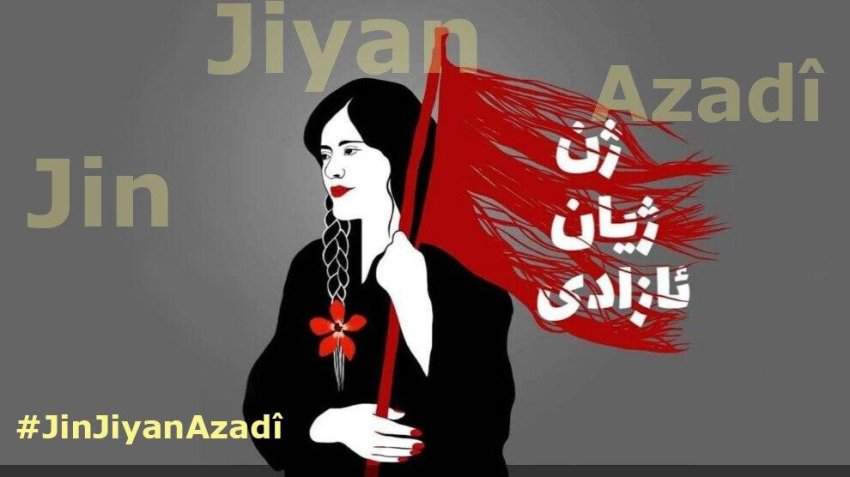
Days of protests have erupted across Iran after Mahsa Amina, a 22-year-old Kurdish woman, died after being arrested and tortured by the Islamic fundamentalist state’s “morality police”, the Gasht-e Ershad (Guidance Patrols), supposedly for not wearing her hijab properly.
Women have cut off their hair and burned their hijabs at some of these protests in another wave of popular revolt against the patriarchal regime’s decree that women must cover their hair in public. They have held up signs reading “We are all #MahsaAmini” and this hashtag has gone viral on social media platforms.
Large crowds also took to the streets in Melbourne on September 20 and Sydney on September 21 to show their solidarity.
According to Amini’s cousin, Irfan Mertezayi, she was arrested on September 13 in Tehran.
“While she was getting off the subway with her brother, she was attacked by the hijab police, and both were subjected to violence for defending themselves.
“Later, Mahsa was taken into custody by these policemen. Her family and brother were told that they could get information from the Moral Public Security Center on Weza Road.
"Mahsa was tortured while in custody.”
Mertezayi said Amini suffered a concussion a few hours after she was taken into custody and was taken to the hospital by the Iranian forces.
“The doctors said that Mahsa had a concussion and that she was brain dead. Mahsa, who was connected to [life support] devices for a few days, passed away in the hospital.”
Gulê Rose, co-chair of the Federation of Democratic Kurdish Society (Australia), is involved in organising rallies to honour Amini and to show solidarity with the protests that have erupted after her brutal killing. She told Green Left: “They picked on Mahsa not only because of the way she wore her hijab but also because she was Kurdish. The Iranian authorities knew she was from an activist Kurdish family so they targeted her for arrest and brutally tortured her.
“Kurds are rising up all around Kurdistan and internationally and raising the slogan ‘Jin, Jiyan, Azadi!’ which means ‘Women, Life, Freedom!’. In Farsi, the same slogan is ‘Zen, Zendegi, Azadi!’
“This has been the most uniting and inspiring slogan of our revolution which sees the liberation of women as the source of its power.
“The Iranian regime, like the regimes in power in Turkey, Syria and Iraq, all are afraid of women who demand freedom.
“And this revolution is not just in Rojava (in north and east Syria), although that is the most famous part of it because our freedom fighters defeated Daesh/ISIS. In all four parts of Kurdistan, occupied by these regimes, Kurdish women have put up a great resistance to patriarchy. No one can stop Kurdish women’s desire for freedom.”
All patriarchal societies and religions like Juadaism, Christianity and Islam have suppressed women, explained Zozan Sima, a writer for Yeni Özgür Politika, a Kurdish newspaper published in Germany.
“Women’s values and women’s bodies were cursed, and their hair became an object of fear. It had to be buried, covered over, on the grounds that it awakened lust in men,” she wrote in an opinion piece in MedyaNews.
“Christianity, which said that the devil hid in among hair, and Judaism, which prescribed the covering or shaving of women’s hair, helped to make this into religious law. But representatives of these religions no longer apply these rules so strictly. Although there is no actual verse relating to the covering of women’s hair, the imposition on women to cover their hair in the name of Islamic tradition is continued by the mullahs’ regime of Iran, the reactionary Taliban of Afghanistan, ISIS and the fascist Justice and Development Party (AKP) of Turkey.
“Making women cover, with headscarf (covering the hair), hijab (including the hair and neck) or niqab (including hair, neck and face, with mesh or slit for the eyes); whether by force or persuasion, by convincing or obliging them, recently also by creating a new sector in the fashion industry, is just one aspect of domination over women’s bodies.
“The matter goes further than the physical covering of the hair and body, it is symbolic, ensuring the enslavement and enforced submission of women. The control over women’s bodies is not limited to the covering of the hair, face, eyes, and body curves. It covers a wide spectrum of cutting and shaping of hair, pressure to lose or gain weight, and make-up and hair dye. The covering of women and encouraging them to exhibit their bodies are different facets of the same policy.”
[There will be a rally for Mahsa Amini in Sydney on September 25, from 2-4pm at Town Hall.]